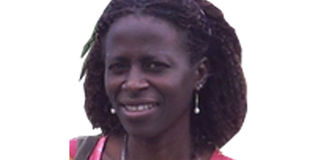It’s a dangerous era in Uganda when anonymous gunmen enforce the law

Olive C Kobusingye
Many voting age Ugandans are not aware that President Museveni is a retired soldier. He is a veteran. And he did not become a general while in active military service – the title was conferred upon him at retirement on April 6, 2004. The immediate reason for Museveni’s retirement was that the Constitution stated clearly that one could not contest to become president if one was a serving member of the armed forces. The UPDF organised a function to retire its Commander-In-Chief.
The then Minister of Defense, Amama Mbabazi, said: “This is the first time in history that we have an army officer of the forces, Commander-In-Chief of the army, who is also President of Uganda, retiring voluntarily in accordance with the rule of law.”
President Museveni exchanged his military uniform for civilian clothing – for a short while. Yet to all outward appearances, there is no difference between the actively serving Museveni and the retired Museveni. Even with the full weight of the Special Forces Command in charge of his personal security, the President dons his military uniform and carries an assault rifle, even on civil occasions. So why is this important?
Uniforms speak. They are eloquent. They can assure or threaten. The uniform is central to the identity of the armed forces. It speaks of the authority, not of the individual wearing the trousers and boots, but of the institutions that they represent. The arrival of a uniformed officer at the scene of a crime, or a fracas, immediately restores order. Or it should. A uniform can quickly identify the wearer. One can determine seniority and status based on the uniform. Unless there is some serious problem, one should not confuse a lieutenant with a general, or a doctor with a hospital orderly.
Over time, the myriad of Ugandan armed forces’ uniforms have become frightening rather than informative or reassuring. While writing names on the breast pocket of the police uniform was a great addition, that benefit has been lost in the now common practice of skipping the uniform altogether.
It would seem that the men and women wearing these distinguished garments do not really understand their language. And maybe that is no surprise, as it appears that some did not earn the right to wear them. Just like doctors or nurses wear their uniforms with pride following the long and rigorous training, the members of the armed forces train long and hard, and they earn the right to wear their distinguishing uniforms.
In 2005, at the height of the insecurity that engulfed eastern Uganda, a militia known as the Arrow Boys, was birthed. The country was assured that this was a spontaneous community response, and that the ‘boys’ were working alongside the police and UPDF to secure the area. Except that they did not stop at arrows. With no clear training, the Arrow Boys were armed with assault rifles. At the end of that conflict, it remained unclear how many Arrow Boys-turned-armed-soldiers there were, and how many firearms remained in the community. Predictably, a wave of armed violence followed the creation of this militia. Confronted by an armed man, it became unclear if one was dealing with a bandit, a Kony rebel, or a legitimate Arrow Boy. A grey and dangerous line separated armed civilians from the uniformed forces.
In the lead-up to the 2011 general elections, the government recruited civilians called ‘crime preventers’. They have since morphed into a national force, now with a national coordinator, and semi-formal links with government departments. With no police training, the crime preventers were given shirts bearing the police logo. No sweat, no training, no ethical sieves yet they got to wear the police uniform. But unlike the police, they are clearly political, and unapologetically partisan. The crime preventers are vocal and clear that they exist to protect President Museveni. At one of their forums, the coordinator said: “You can see we are ready to die for the President. Our existence is the extension of the 1986 revolution”. And ‘… we have enough numbers to engage whoever wants to oppose the plan to have President Museveni in State House beyond 2021. This is a movement that is well guided. If we mobilised only 60,000 village crime preventers, we would silence the whole country.”
So we now have a para-police militia created at the direction of the President for his own protection, and it wears the police uniform. To that add Boda Boda2010 and other militias of dubious intent. Ugandans have witnessed Kiboko Squad goons working alongside the uniformed police. We have seen the hooded Black Mamba besiege and raid the High Court under the direction of the uniformed police. We have known UPDF officers to exchange their military uniforms for police uniforms without skipping a beat. Civilian NRM cadres and MPs go to Kyankwanzi and they all dress up in military uniforms.
And now, we have entered a new era of – no uniform. Marauding violent men and women leap out of police vans to brutalise and arrest civilians, and it is usually unclear if they or the uniformed police have the upper hand. This is a dangerous state of affairs. In this new era, civilians have no idea whatsoever if they have fallen in the hands of a rebel force or a para-military militia sanctioned by the IGP. All citizens of goodwill should vehemently protest the slippery slope onto which the country has been thrust because in the end, it will not matter the colour of your tie or headband.
Ms Kobusingye is a medical doctor and author


